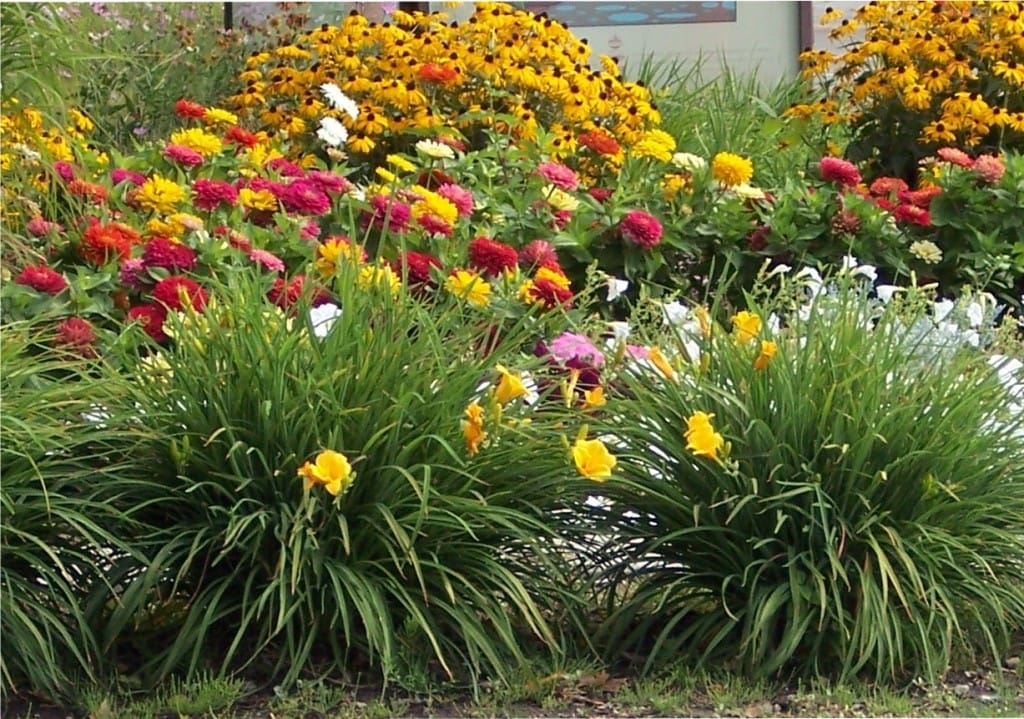Source(s): Randy Drinkard
Are your flowers and shrubs ready for the heat this summer? If you rely on municipal water to irrigate your landscape, you may be prohibited from using it to keep your outside plants green and healthy. Start drought-proofing your landscape now so that it can survive with little to no supplemental water this summer.
First, consider what areas require the most water and think of ways you can reduce the water use. For instance, an irrigated area might be replaced with some large beds of drought-tolerant ground covers, such as spreading junipers, like ‘Blue Rug’, ‘Sargents’, ‘Prince of Wales’ or ‘Blue pacific’. Other good, drought-hardy ground covers include, liriope, Asiatic jasmine, Carolina jasmine, trumpet creeper, day lilies and creeping raspberry.
To save money when planting a large area, ask your local nurserymen about ordering liners. Liners are small, rooted cuttings that are available bare-root or in 2-inch pots. Many Georgia growers produce liner plants, and some garden centers can get them, too, if you ask.
There are also a number of excellent drought-tolerant shrubs, such as dwarf yaupon holly, Indian hawthorn, dwarf crepe myrtle, glossy abelia and ‘Miss Huff’ lantana. And don’t forget the ornamental grasses, including maiden grass, fountain grass and Japanese silver grass. Ornamental grasses are tough as nails and are unaffected by drought conditions.
Georgia flower growers are right on target with their production of drought-tolerant color plants, including sedum, verbena, Purple Heart, gaura, wave petunias, and ‘New Gold’ lantana.
Although they sometimes shut down during periods of extended drought, these plants bounce back with renewed vigor when the rains return.
You don’t have to invest a lot of money to make your landscape more drought-tolerant. Consider putting in some sweeping beds of pine straw, pine bark or shredded wood mulch in the place of irrigated landscape. Many municipalities make shredded mulch materials available now that they can no longer put yard wastes in the landfills.
Also, old newspapers can make an excellent mulch around ornamental shrubs, flowers and vegetable plants. Use a leaf rake to gently pull back your existing mulch, wet or dip newspapers in a bucket of water and then spread papers two sheets thick on the ground. Put the mulch back over the newspaper to conceal it and hold it in place. Newpapers not only help hold moisture in the soil but add organic matter as they slowly decompose.
When retrofitting your landscape with more drought-tolerant plants, the key is to get the plants established before summer heat and watering restrictions arrive. Water your plants as needed to get them established for the first six to eight weeks after planting, then turn off the tap and let Mother Nature provide the water for the remainder of the year. By gradually reducing the amount of water supplied to the landscape and garden you will be helping to reduce the plant’s reliance on supplemental watering later this summer when temperatures and drought conditions become more severe. By slowly weaning your plants from excessive moisture, their root systems will be encouraged to grow more deeply in search of water.
Resource(s): Care of Ornamental Plants in the Landscape
Center Publication Number: 92
- Saddleback Caterpillars: Watch Out for that Sting - September 26, 2018
- Hanging Baskets - September 24, 2013
- Houseplant Help - September 24, 2013
